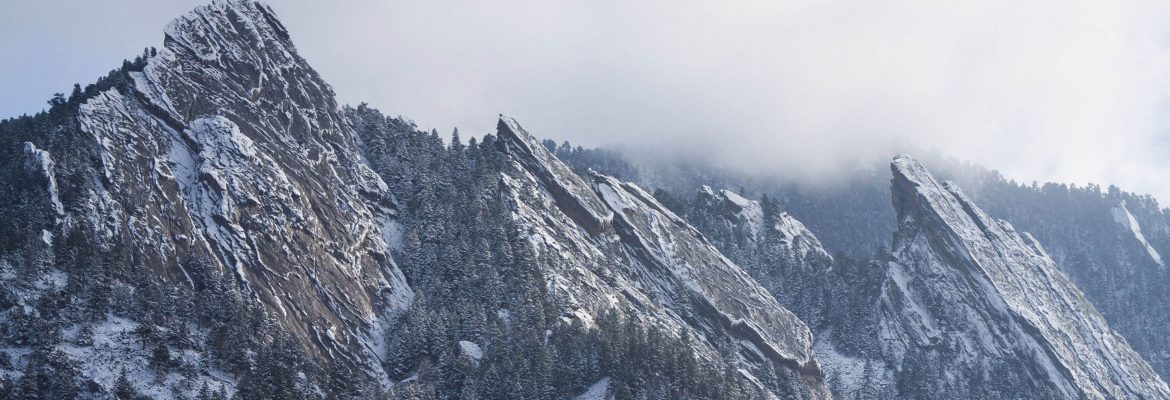Rock Formations, Flatirons, Colorado, USA
The Flatirons are part of a rock unit known as the Fountain Formation. These rocks are sedimentary—that is, rocks that have been formed by broken fragments of older rock. The Fountain Formation was deposited approximately 280 million years ago, during a time geologists refer to as the Pennsylvanian Period.
The sedimentary rocks that make up the Fountain Formation formed from materials that were eroded from an Ancestral Rocky Mountain Range that existed roughly 30 miles west of the Boulder area. As these mountains wore down, coarse sand and gravel was deposited in all directions, eventually hardening to rock. The Ancestral Rockies were eventually worn down completely, and the eroded material formed younger sedimentary rock layers on top of the Fountain Formation.
Although they were initially laid down in relatively flat, horizontal layers, rocks that comprise the Fountain Formation and those that were later deposited on top of them have been sharply tilted by another major uplift of the Rocky Mountain region that occurred approximately 65 million years ago. Have you ever observed a drawbridge as it tilted upward to allow ships to pass?
As the Rocky Mountains rose, the overlying sedimentary rocks were tilted up in much the same way. In fact, the other flank of the “drawbridge” can be seen dipping to the west on the Colorado western slope. The Maroon Bells near Aspen form a portion of the Fountain Formation’s western counterpart.
Visit USA. Epic USA Adventure Route © All Rights Reserved | Monika & Simon Newbound 2017


